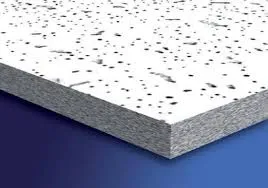Dec . 11, 2024 18:31 Back to list
bathroom ceiling access panel
Understanding Bathroom Ceiling Access Panels A Comprehensive Guide
Access panels are essential components in any building, especially in areas like bathrooms, where plumbing and electrical systems may need regular maintenance. A bathroom ceiling access panel provides a practical solution for gaining quick and easy access to concealed plumbing, electrical lines, and ductwork. This article will explore the importance of these panels, their various types, installation processes, and maintenance tips to ensure longevity and efficient functionality.
Importance of Bathroom Ceiling Access Panels
Bathrooms often house vital systems that require frequent checks. The ceiling, which may conceal plumbing pipes or electrical wiring, can be hard to reach without the proper tools. An access panel serves as a convenient entry point, preventing the need for extensive remodeling or damaging the structure. This accessibility is crucial not only for maintenance and repairs but also for inspections. By facilitating easy access, these panels help in identifying potential problems early, thus preventing costly repairs down the line.
Types of Access Panels
There are various types of bathroom ceiling access panels, each designed for specific purposes
1. Drywall Access Panels These are ideal for ceilings made from drywall. They can be seamlessly integrated into the ceiling during construction or remodeling and are available in various sizes.
2. Metal Access Panels Often used in commercial settings, these panels are durable and can withstand harsher conditions. They provide excellent protection against moisture, making them suitable for bathroom environments.
3. Plastic Access Panels Lightweight and rust-resistant, plastic panels are an excellent choice for bathrooms, as they can resist moisture and stains. They come in pre-finished designs, integrating well with bathroom aesthetics.
4. Fire-Rated Access Panels In areas where fire resistance is crucial, these panels provide an added layer of safety, helping to slow the spread of fire and smoke.
Installation Process
bathroom ceiling access panel

Installing a bathroom ceiling access panel may seem straightforward, but it requires careful planning and execution. Here’s a brief overview of the process
1. Choose the Location Determine the location based on the plumbing and electrical systems that need access. Ensure that the panel is positioned where it won’t obstruct any fixtures like lights or fans.
2. Measure and Cut Measure the dimensions of the panel carefully. If you’re installing it in drywall, use a drywall saw to cut a hole that fits the panel snugly.
3. Secure the Panel Follow the manufacturer's instructions for securing the panel in place. This may involve using screws or clips, depending on the panel type.
4. Finishing Touches Paint or finish the panel to match the surrounding ceiling, ensuring it is aesthetically pleasing.
Maintenance Tips
To maintain the functionality of your bathroom ceiling access panel, consider the following tips
- Regular Checks Periodically inspect the panel for signs of wear or damage. Look for moisture buildup, which could indicate issues with plumbing systems.
- Keep It Clean Dust and debris can accumulate around the panel, affecting its appearance and function. Regular cleaning will help keep it looking new.
- Seal Properly Ensure that the access panel is sealed correctly to prevent moisture from seeping in. Caulking around the edges can provide additional protection.
In conclusion, bathroom ceiling access panels are indispensable for maintaining the hidden complexities of a bathroom. By selecting the right type and ensuring proper installation and maintenance, homeowners can significantly enhance their bathroom’s functionality and longevity. Whether remodeling or constructing a new home, consider integrating quality access panels to ensure ease of access for all your plumbing and electrical needs.
-
Quality Ceiling Trap Doors & Access Panels | Easy & Secure AccessNewsAug.30,2025
-
Durable Ceiling T Grid Systems | Easy InstallationNewsAug.29,2025
-
PVC Gypsum Ceiling: Durable, Laminated Tiles for Modern SpacesNewsAug.28,2025
-
Pvc Gypsum Ceiling Is DurableNewsAug.21,2025
-
Mineral Fiber Board Is DurableNewsAug.21,2025
-
Ceiling Tile Clip Reusable DesignNewsAug.21,2025







